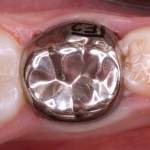
This review of the prevalence of clinical and radiographic sequelae following traumatic dental injuries to primary teeth included 25 cross-sectional studies. Crown discolouration followed by pulp necrosis with infection were the most common sequelae but the findings should be viewd with caution because the evidence is of very low certainty.
[read the full story...]





